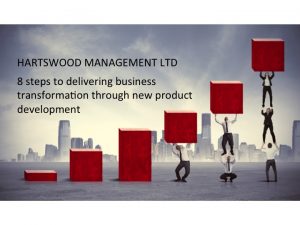 When organisations are struggling for performance and revenue is flat or declining, the sales teams often say “Give us some new products and we will be able to increase sales.” In truth this might not be based on any analysis but it might simply be a way of them saying “the problem is not with us”.
When organisations are struggling for performance and revenue is flat or declining, the sales teams often say “Give us some new products and we will be able to increase sales.” In truth this might not be based on any analysis but it might simply be a way of them saying “the problem is not with us”.
This input from the sales team can lead the senior team to launch a transformation programme to drive additional sales through new, enhanced or re-engineered products. This type of transformation programme may sound straightforward (avoiding the angst of a cost reduction programme) and appealing as it will release the creative people in the organisation. However this type of transformation programme is never as easy as it sounds.
At the heart of the revenue-growth transformation programme are 2 significant challenges:
- The major decisions sit with people outside the organisation. The customer not the transforming organisation will decide if the new product is purchased.
- Additionally the competitors will decide how they respond and how quickly.
The programmes and projects are truly multidisciplinary requiring the engagement of many departments eg marketing, product development, user engagement, testing, commercial, support, maintenance, delivery etc. The outcome will only be as good as the weakest link in this chain.
Having been involved in a number of these programmes my list of critical steps for success is as follows:
- Develop a clear requirements specification that has been tested in the market (eg through selected customers, focus groups).
- Ensure that the sales team have actively signed off the proposal. Note – they are unlikely to engage with a 20 – 100 page specification so more direct approaches are needed.
- Agree the market and go-to-market plans up-front as this will help to ensure that the proposal is considered from the customer’s perspective and good engagement with the sales team. This step should include some contingency planning around competitor responses.
- Find an early opportunity to trial the sale of a minimum viable product avoiding a failure after a long development cycle.
- Alongside 4, select a trial territory or group of customers.
- Include in the project team all the disciplines needed to deliver a new product eg market analysis, product development, testing (all types), build, sales, commercial, market communication, sales support, hosting, procurement, supply and delivery, modifications and releases, technical support, training (internal and external) etc.
- Run a parallel programme to address capability gaps eg market analysis, selling skills, testing.
- Decide how to track the benefits and how this fits with the sales / revenue budget especially if the sales cycle will take several months. Consider how to track progress when the sales cycle is long.
Senior leadership teams are often attracted by business transformation coming through growing revenue from new products. This can often be seen as visionary and unifying in contrast to other types of transformation. However the successful delivery of such a programme will require careful planning and management to ensure future proofing around the customer needs, competitor responses and multidisciplinary working.
Andrew Kearns
Hartswood Management Ltd
Delivering real transformation
www.hartswoodmanagement.co.uk
For advice on structuring your transformation or change programme please email andrewkearns@hartswoodmanagement.co.uk
For further insights please visit – www.hartswoodmanagement.co.uk/insights
Suggestions for further actions:
- Read Changing Spots – a systems approach to change management for details on leading change programmes (see www.changingspots.co.uk).
- Establish how the product specification and go-to-market plans should be described.
- Consider options for the early testing and trialing of the product.
